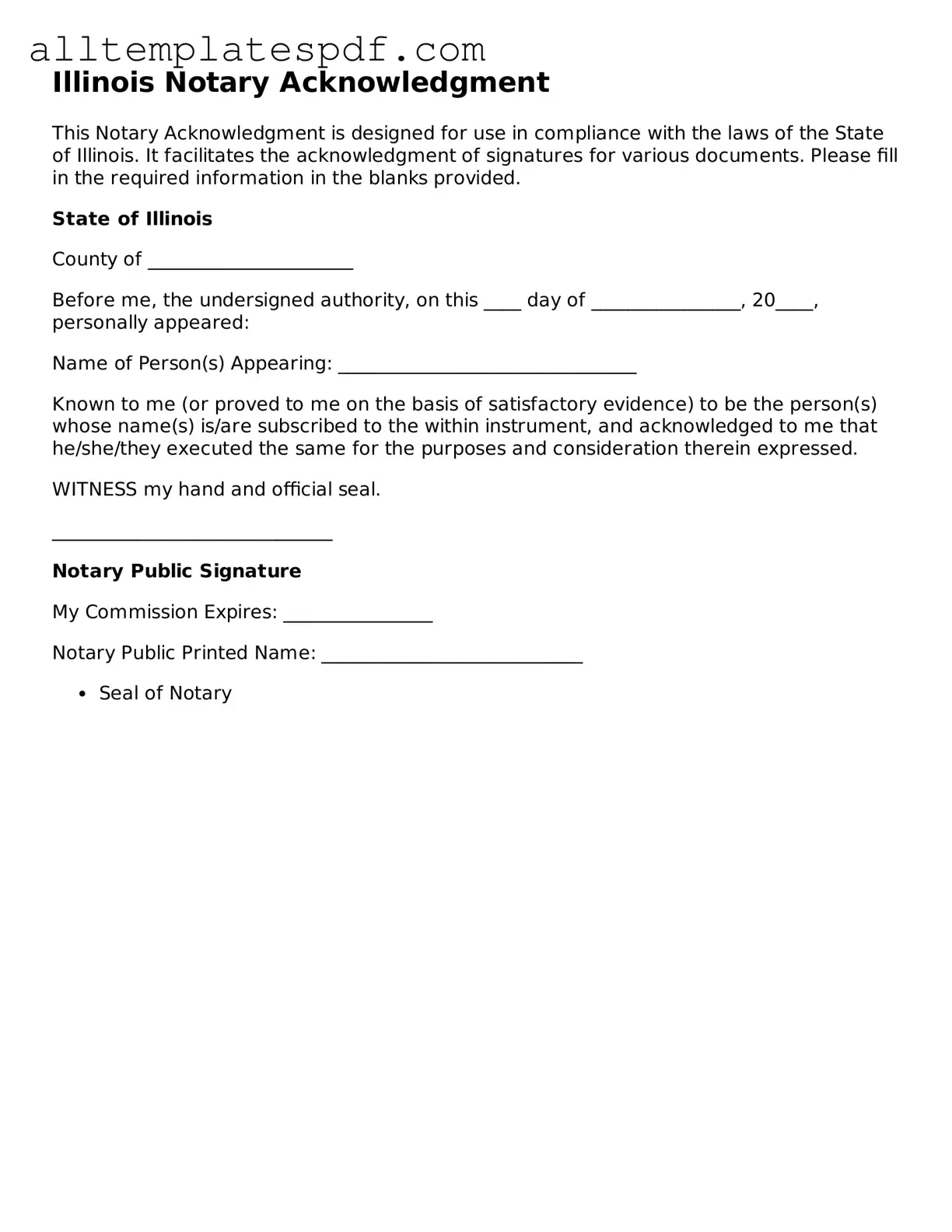Instructions on Utilizing Illinois Notary Acknowledgement
Once you have the Illinois Notary Acknowledgment form ready, you can begin filling it out. Ensure you have all necessary information at hand, as accuracy is key. Follow these steps to complete the form correctly.
- Start by entering the date at the top of the form. Use the format MM/DD/YYYY.
- Next, write the name of the person who is signing the document. This should be their full legal name.
- In the following section, provide the address of the signer. Include the street address, city, state, and zip code.
- Indicate the type of document being acknowledged. This could be a deed, mortgage, or any other legal document.
- Leave space for your signature as the notary public. Sign the form in the designated area.
- Print your name below your signature. Make sure it matches the name on your notary commission.
- Fill in your notary commission number, if required. This number is usually found on your notary certificate.
- Finally, add the expiration date of your notary commission. This date indicates how long your notary authority is valid.
After completing the form, double-check all entries for accuracy. Once confirmed, you can proceed with the notarial act, ensuring that the signer is present and that you follow all necessary procedures.
